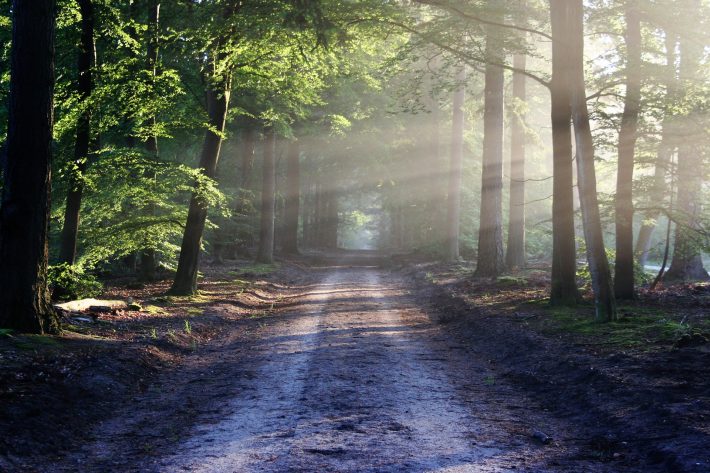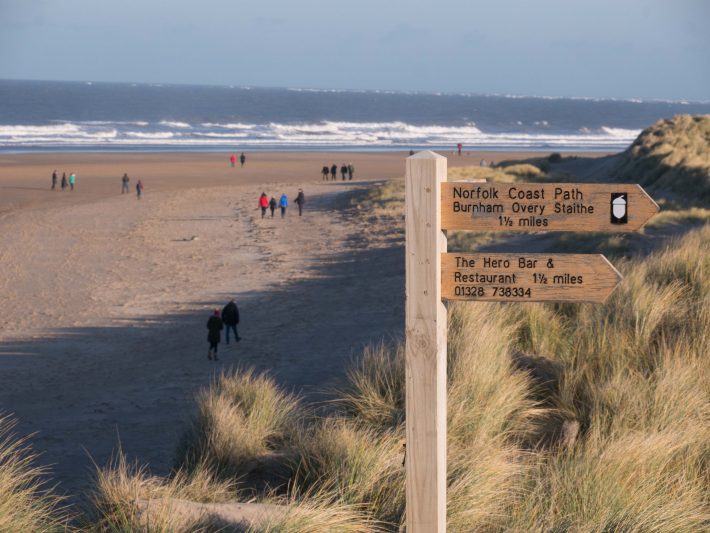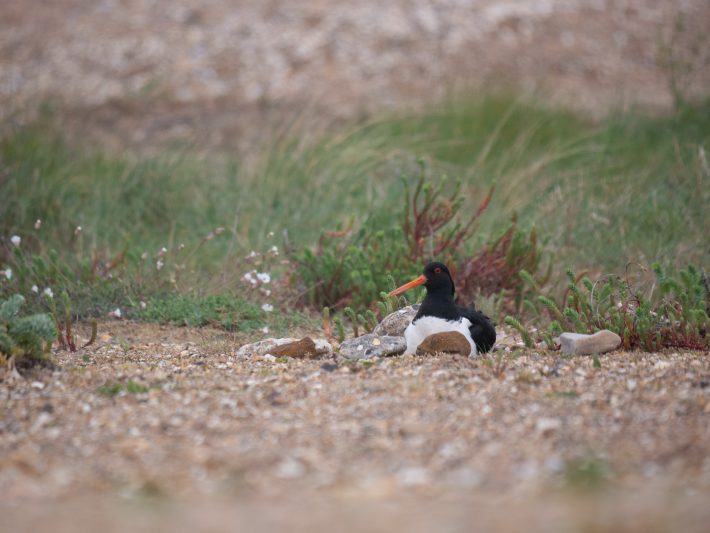How can we balance wildlife conservation with public access to nature?
At our first People, Policy & Planet event in London, we brought together 45 ecologists, practitioners and policy makers to debate how we can balance wildlife conservation with public access to nature.

We know that connecting with nature makes us feel better. And we know that if people spend time in nature they are more likely to value it. But we also know that our presence in wild places disturbs wildlife and damages habitat. How can we find a balance between increasing access to nature and minimising the related environmental impacts? At our English Policy Group’s inaugural People, Policy & Planet event, participants discussed the complexities of this timely topic and potential solutions.
There is now a wealth of evidence about the benefits of nature for human wellbeing. The work of former nurse Sarah Howes underlines how access to green space increases positive emotions, promotes ‘meaning-making’ in life and builds a sense of belonging in the natural world, thereby fostering an interest in caring for it. ‘Green social prescribing’, meaning healthcare workers prescribing nature-based interventions such as walking and community gardening to patients, is increasingly part of the NHS’ long term plan.
Unfortunately, not everybody can benefit from easy access to nature; less affluent neighbourhoods generally have less quality green space. When people live far away from accessible nature, they need a car or train tickets to access it, on top of paying for reserve passes, parking, and outdoor gear.
Expanding access to nature would reduce inequalities, improve health and wellbeing (thereby reducing costs to the NHS) and promote an interest in nature protection among the population.
However, many important sites are still reeling from the boom of visitors created by the COVID-19 pandemic. It is often our most important sites for biodiversity that allow access, and these are experiencing the increased pressure of a growing population seeking the benefits that they have to offer. This decreases space for wildlife and drives ecosystem degradation.

Dr Durwyn Liley, Director at Footprint Ecology, analysed direct habitat damage resulting from increased access to nature – from contamination from litter, dogs and the spread of non-native species, to indirect effects such as wildlife disturbance. This disturbance can result in direct mortality, for example due to nest trampling or dogs hunting, but wildlife can also avoid their habitat altogether as a result of human presence, for example causing birds to abandon their nests.
Durwyn’s modelling of beach-nesting ringed plovers in Norfolk found that a complete absence of disturbance would result in a population increase of 85%. Additionally, there are a range of studies on birds showing physiological signs of stress in areas of higher disturbance, from higher corticosterone (a stress hormone) levels to raised heartbeats; wandering albatross can show an elevated heart rate for 2-3 hours after someone has passed their nest. Birds may therefore appear ‘undisturbed’, but stress results in poor breeding success.
There was a general consensus between participants of the event that access to nature should be expanded, not only for wellbeing but to promote pro-conservation behaviours. It was also highlighted that nature loss is not being primarily driven by human recreation, but rather by pollution, agriculture and new developments. However, there is a trade-off between potential harm to sites of high biodiversity value and benefits in terms of increased environmental awareness.
Six proposed solutions
Participants discussed potential solutions to expanding access to nature while reducing pressure on biodiversity.
1. The dilution effect and improving urban nature
With only 8% of land currently available for recreation, millions of people are forced to use the same sites. Expanding access to more of the countryside could therefore have a dilution effect, dispersing nature seekers across the country and lessening the pressure on overburdened parks and reserves.
Increasing urban biodiversity will also contribute to expanding access to nature, lessening the need to visit wildlife reserves to connect with nature. Urban green spaces can be designed to attract invertebrates and especially pollinators, which in turn will bring more birds, and thereby improving wellbeing: studies have shown that people feel happier when they hear a more diverse mix of birdsongs.
However, this isn’t enough to ensure species protection; people will still focus on the most beautiful locations and continue to go to places they have easy access to.
2. Zoning
This approach establishes ‘zones’ with restricted access to allow vulnerable species to recover in those areas, while increasing access in other areas. For example, the National Trust restricts access to the most vulnerable sites at certain times of the year, e.g. during breeding seasons for seal and bird populations. ‘Sacrificial’ areas can allow high levels of access whilst protecting the wider site. In addition, more land could be accessed without putting more pressure on biodiversity; for example, the edges of agricultural fields.
If more of the countryside becomes accessible, more infrastructure will be required to cope with the number of visitors. At important sites for nature, it’s vital to provide a semi-controlled experience to reduce impacts, including paths, fences and signage to ensure that visitors and dogs don’t stray into certain areas. Positive language on signage particularly brings about more benefits in terms of behavioural change.
More research is needed into what infrastructure works to protect species, including collaborations with behavioural scientists to discover how people respond to different interventions and what nudges will influence their behaviour.

3. Dogs
Dogs are one of the main reasons people go outdoors. 31% of National Trust members own one. But they are also one of the main issues around access to nature, causing wildlife disturbance as well as pollution via fouling, leaching of shampoos, flea powder and tick treatments.
For this reason, the most important sites should not be locations for people to visit for daily dog walks. Other countries have a culture of dog parks for tiring out dogs before walking them on a lead through more biodiverse areas. The National Trust has sacrificial areas where dogs can be off lead but ask that they are on lead in most areas.
Engaging owners and promoting responsible dog ownership is key. The Scottish Outdoor Access Code has rules for how dogs can access land, including keeping them on short leads or under close control during the bird breeding season. One way to reduce the environmental impact of dogs walking is to introduce a system of obligatory dog licenses (including an educational course in responsible ownership) for those buying or adopting dogs.
4. The path to right to roam
Expanding nature access requires a bottom-up, rather than a top-down approach, connecting and building relationships between different stakeholders. A more inclusive approach is needed, where agreement can be reached and conflicts resolved. Landowners and farmers need to be heard, and the approach should be personalised to local areas.
Access to nature policies should be embedded in Defra’s developing Land Use Framework, and could also be incorporated into net zero and biodiversity policies, including the new Environmental Land Management Schemes. This will ensure that farmers are paid for nature-friendly farming actions that grant access to their land.
Health is an important policy lever: expanding access while protecting wildlife will require funding, and the potential for the NHS to save money due to nature-related public health improvements is a strong incentive.
5. Education, education, education
Education needs to be developed alongside access to encourage a cultural shift towards respect and responsibility for nature and the countryside. Many are unaware of the Countryside Code because it isn’t well publicised. In this sense, schools have an important role to play, creating the skills and knowledge that allow young people to create a connection with nature and, over time, a greater sense of responsibility.
6. Increasing nature connectedness and equity
While it has been found that 120 minutes in nature a week is associated with good health and wellbeing, the quality of that time is crucial and it is important to encourage nature connectedness, rather than just nature contact. Citizen science projects are not only valuable for environmental monitoring, they also benefit those who partake in them by promoting nature connectedness and wellbeing.
It is vital to expand equity in nature access so that everyone feels inspired to protect it. Psychotherapist Beth Collier highlighted some of the reasons that People of Colour might spend less time in nature, including emotional and psychological barriers about who nature is for and concerns about experiencing racism and hostility in the countryside.
There are also generational messages passed down in some communities, such as the idea that the great outdoors is a white privilege. We need more initiatives like Wild in the City, which works to support People of Colour to explore their connection with the natural world, teaching them natural history and practical woodland living skills as a form of ecotherapy.
With thanks to all who attended this lively, thought-provoking event, especially to our six fantastic speakers Sarah Howes, Beth Collier, Dr Amy-Jane Beer, Dr Durwyn Liley, Rob Rhodes, and Dr Michael Pocock. We hope it will contribute to further discussions on this important topic.
For more information, you can read the full event report here.
If you’d like to take part in similar events in the future, join the English Policy Group mailing list.
Like what we stand for?
Support our mission and help develop the next generation of ecologists by donating to the British Ecological Society.